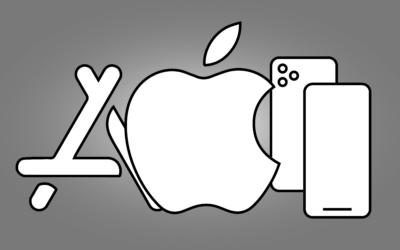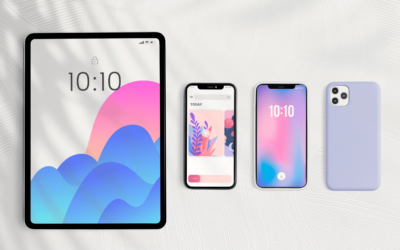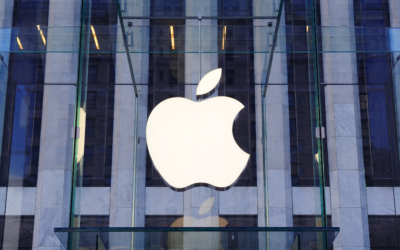Table of Content
In early May 2025, Apple moved swiftly to comply with a U.S. federal court’s injunction in Epic Games v. Apple, reshaping its App Store payment rules for the United States storefront. Judge Yvonne Gonzalez Rogers ruled that Apple could no longer prevent developers from steering users to external purchase methods or levy commissions on transactions completed outside its in-app system.
In response, Apple updated its App Review Guidelines to allow a single, clearly labeled link or button directing users to a developer-operated web checkout, without any accompanying “scare screens” or fees imposed by Apple while the order remains in effect .
Key changes include:
- External links permitted: U.S. apps may now include one link to an external checkout page without requiring any special entitlement.
- Zero commission: The previously proposed 27% “external purchase” fee is barred for the duration of the injunction.
- Discouraging ‘Scare Screens’ Prohibited, Neutral Notice Permitted: Apple can no longer display warning screens or messages designed to discourage users or create friction when following external links. However, a neutral, informational ‘Leaving the App’ notice is still permitted by Apple to inform users they are navigating outside the app.
These revisions apply exclusively to apps distributed on the United States App Store and leave non-U.S. storefronts under the existing policy.
iOS Monetization Opportunities & Required Adaptations in the U.S. App Store
The recent changes to the U.S. App Store payment rules present a significant opportunity for developers to optimize their iOS app monetization strategy. The most immediate and impactful benefit is the ability to capture 100 percent of revenue, minus the payment processing fees, from U.S. sales routed through external payment systems, bypassing Apple’s commission.
Beyond revenue retention, this shift grants unprecedented flexibility. Developers and marketers can now implement dynamic pricing, A/B test offers, and create personalized promotions directly within the app experience – something previously restricted.
Furthermore, the changes unlock advanced capabilities like designing custom flows for bundling products and upselling, gaining granular control over the full subscription management lifecycle (including upgrades, downgrades, cancellations, and tailored retention efforts), and creating seamless Web-to-App and App-to-Web marketing funnels. Apps can even present dual payment options, offering both Apple IAP and external links side-by-side, letting users choose their preferred method.
Seizing this opportunity requires practical implementation work. Development teams will need to design and integrate a compliant, user-friendly external purchase link within the app’s UI, adhering to Apple’s single-link rule. This also necessitates building or connecting to a secure web checkout flow, ensuring a smooth user handover and transaction process. Many developers are already leveraging established payment platforms to facilitate this, and companies have quickly begun integrating external billing.
While the path to avoid large payment commissions is now open, developers must also consider the dynamic nature of this change. The court injunction permitting these links is under appeal by Apple, meaning the policy could potentially revert or evolve further.
Therefore, maintaining flexibility in your iOS development roadmap is key. By proactively adapting and implementing an external billing solution, developers are best positioned to maximize current benefits while being prepared for future platform shifts.
Adapting Your iOS App for External Payments
To capture 100 percent of U.S. revenue (minus payment providers fees) and unlock dynamic pricing, iOS teams will need to focus on these key areas and requirements:
Design a Clear Purchase Link or Button
- Add a single, prominent call-to-action (e.g., “Subscribe,” “Go Premium”) in your app UI, ensuring the label and placement comply with Apple’s one-link rule and are user-friendly.
- Prepare for Apple’s required, neutral “Leaving the App” notice that users will see before being redirected to your external checkout. Ensure this transition feels as seamless as possible.
Build—or Integrate—a Secure Web Checkout Flow
- Host a mobile-optimized, PCI-compliant payment page via a trusted payment processor (e.g., Stripe, Braintree, Paddle).
- Architect a secure redirect or in-app webview (or external browser) that preserves session context and branding for the user.
- Design the flow to deliver entitlements (unlocking content/features) immediately upon successful payment confirmation.
Implement Robust Backend Logic
- This is critical: Set up webhooks or SDK callbacks to securely receive real-time payment confirmations from your processor.
- Build reliable logic to verify transactions and securely unlock content or grant subscriptions within your app based on successful external payments.
- Implement systems to log transactions accurately for analytics, reporting, and reconciliation.
Update Your App’s App Store Metadata
- Revise screenshots and description to appropriately showcase your new external-payment option if desired.
- Submit your updated app under the revised guidelines—remember, no special entitlement is needed just for including the external link.
Test End-to-End UX, Compliance, and Security Thoroughly
- Verify that tapping the link takes users seamlessly to your web checkout and back into the app experience if applicable.
- Confirm there are no unauthorized “scare screens,” interstitials, or hidden fees that violate Apple’s updated rules.
- Conduct rigorous testing of error cases and edge-case scenarios within the payment flow.
- If you are retaining in-app purchase options alongside external links, consider A/B testing placement, messaging, and flow to optimize conversion across both paths.
- Implement and validate your processor’s fraud prevention rules and establish monitoring for suspicious activity or chargebacks.
Monitor User Feedback and Performance
- Track key business metrics like conversion lift, funnel drop-off points in the new flow, and average order value.
- Actively monitor support tickets and user feedback specifically related to the external payment experience.
- Iterate quickly on design, copy, pricing tiers, and checkout flow based on real-time analytics and feedback to maximize both uptake and revenue.
Maintain Agility for Future Shifts
- Given that the underlying injunction is under appeal, it is important to architect your external payment solution with modularity in mind. This approach will allow you to adapt quickly if Apple’s policies change or revert, making it easier to adjust your strategy or transition between external and in-app purchase options if necessary.
Successfully implementing these changes to capture this revenue and offer dynamic pricing requires careful technical execution. Teams need to ensure secure payment flows, a compliant user experience, and a seamless integration with their backend systems. Navigating the technical nuances and preparing for App Store submission under the new guidelines can be time-consuming.
For teams looking to navigate these complexities efficiently and capitalize on the revenue benefits fast, partnering with an experienced mobile app development company can accelerate the process.
Ready to Unlock 100 % of Your iOS App Monetization?
Krasamo is an iOS development company that can help you navigate the new monetization landscape. We can spin up an external-payment integration or partner with you to build, refactor, and optimize your entire application for higher returns. Let us handle the complexities of design, secure development, and App Store compliance. Talk to us today, and let’s build an app that maximizes your revenue.













Omg congrats on this dope blog post!!! 🎉 I’m super hyped about the tips on how a mobile app development company can unlock external links in the U.S. App Store! The one-link rule and Apple’s required notice are definitely things to consider for seamless user experience. Keep pushing out these insightful posts, they’re helping me stay up-to-date on iOS dev best practices 📈👏
I read this post a while back and I gotta say, it’s still pretty relevant. As someone who’s worked on a bunch of ios projects, I can tell you that external link monetization is just the tip of the iceberg when it comes to maximizing app revenue. If you’re looking for some expert guidance on how to implement these features without getting into trouble with the App Store, I’d recommend checking out some ios app development services that specialize in this area. Krasamo sounds like a decent company, but there are plenty of other options too!
I’ve worked with iOS in-app monetization strategies before and I gotta say, this post is spot on about implementing robust backend logic. The attention to detail on testing end-to-end UX, compliance, and security is also super important.